Spring at the Brooklyn Botanical Garden
An essay by Ramaa Reddy Raghavan
It is Spring, but where is the sun?
As I write this piece in mid-April, the temperature outside is a frigid 47 degrees and everyone around me is fed-up with this downright, depressing weather. After the long winter, filled with nor’easters, rain and snow, I find that I am ready for a change. So, with a spring in my step (no pun intended), I venture out to the Brooklyn Botanical garden to see what’s in bloom.
I first head to Magnolia Plaza, as I am told this is the place to be and watch a group of school-children chattering. As I enter, I am surrounded by a multitude of ivory, yellow, pink and rich purple flowering magnolias. The garden’s 72 magnolia trees, which include 17 species, are in full bloom; visitors are busy taking selfies to celebrate this ephemeral moment. Elizabeth Longoria, Director of Communications, joins me and says that this year the magnolia blooms have been later than usual because of the cold. She adds that in May, magnolia petals will drop, leaving the tree covered in a lush dark green foliage.
We walk towards the cherry esplanade as cherry blossoms are my Spring’s delight. I learn that the daffodil varieties include Narcissus ‘Spellbinder,’ which displays bright yellow and white blooms as well as Narcissus ‘King Alfred’, the largest of all the trumpet daffodils.
As we continue our walk, we hear bulldozers and men in hard hats working within enclosed spaces that are covered with large construction signs. Longoria explains that the garden is undertaking a huge water sustainability project that will recirculate 99 percent of the garden’s water usage. This conservation project will link the pond in the Japanese Garden with the pond in the Water Garden and will save the garden 21 million gallons of water a year.
“About a 100 years ago this was not an issue as people did not have to save water but now it is a necessity.”
Longoria says that a part of the construction will come down in May while the rest will follow later in summer. We arrive at the cherry trees but I am disappointed as there are only a few trees in bloom with flush pink flowers, the variety is the dazzling Prunus subhirtella ‘Rosy Cloud.’ Unfortunately, none of the trees on the esplanade are in bloom.
“We have 22 varieties of cherry trees from Japan,” Longoria says. “The tree, from first bud till it falls, lasts 2 weeks but because we have different trees our season is 5 – 6 weeks long. The season began on March 30 and then we went into a cold holding period. We are expecting peak bloom in the esplanade to be in the first week of May.”
The garden manually checks each tree, every-day and the results are updated on its map and website. According to the director of horticulture, this year was not super cold so the upcoming cherry blossom season should be good. The garden’s annual cherry blossom festival – Sakura Matsuri – will be held at the end of April.
From the Cherry Walk we make out way to the Japanese Garden and view more cherry trees, the Prunus subhirtella ‘Pendula,’ variety that are in bloom along the pond. Suddenly, a white Egret alights on the roof of the garden house and decides to join us in savoring these pink beauties. As we walk out of the Japanese Garden a strong spicy sweet rich fragrance hits us and we hunt for its origins. We walk into the Fragrance Garden like detectives using our sense of smell as guides but are disappointed. As we stroll, Langoria tells me that the Fragrance Garden was developed for people with visual impairments and it is the only area in the garden where visitors can touch and feel a plant’s texture and scent. The beds are all accessible to people in wheelchairs.
“The garden offers memory tours led by people trained in horticultural therapy, that cater to patients with Alzheimer’s and dementia. Similar tours are held for children in the Discovery Garden for children with special needs, specifically autism and physical disabilities.”
As we sleuth our way around looking for the elusive fragrance, we find a gardener and decide to ask. She believes its Boxwood or Sweet Box, two shrubs that emit a lovely perfume. We walk toward them, but these too have not yet bloomed. Finally, our snooping pays off and we find the source – an Apricot tree with small white flowers, a Prunus mume, that stands at the entrance to the Fragrance garden. The gardener adds that the current cool temperature has made this one of the best years for the apricot tree as has held on to its flowers.
Our last stop is to the Water Garden and the newest part of the garden. It showcases an expanded pond and brook, another part of the garden’s sustainability project, that will incorporate latest satellite technology to proactively release water from the pond, in advance of major storm events, so as to mitigate New York City’s sewer overflow. All the plants in the Water Garden feature local foliage and the area promises to be beautiful once Spring finally gets underway.

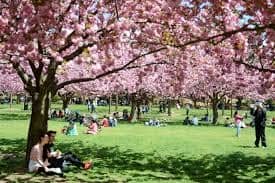
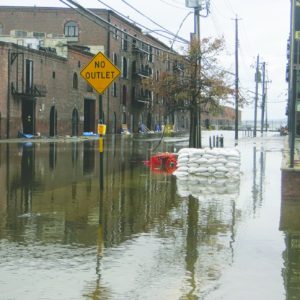
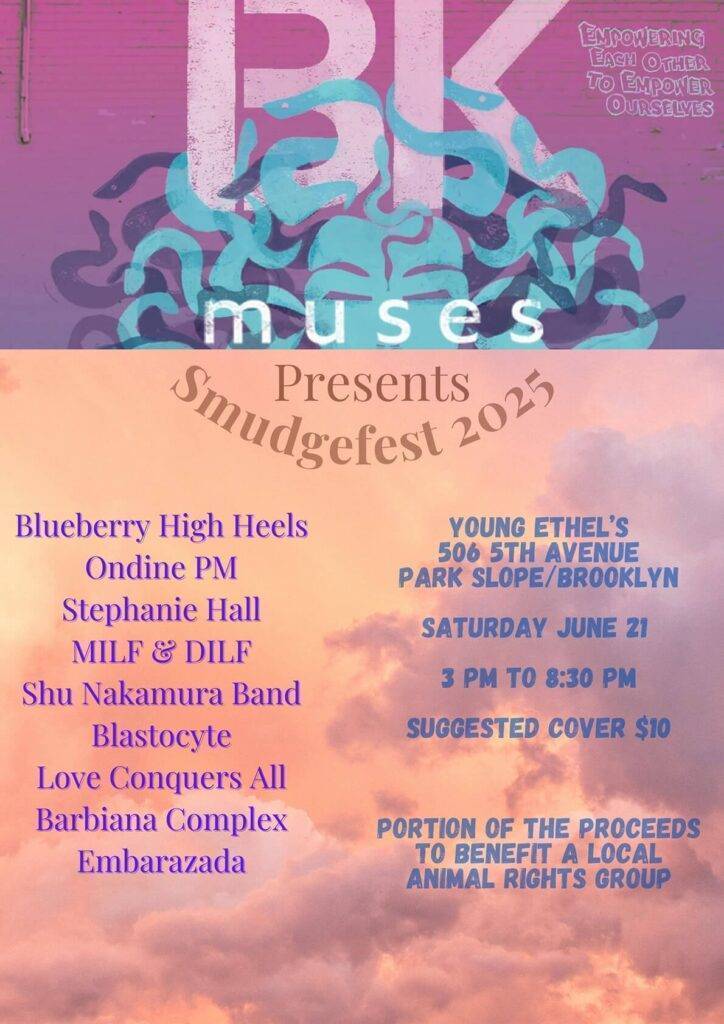




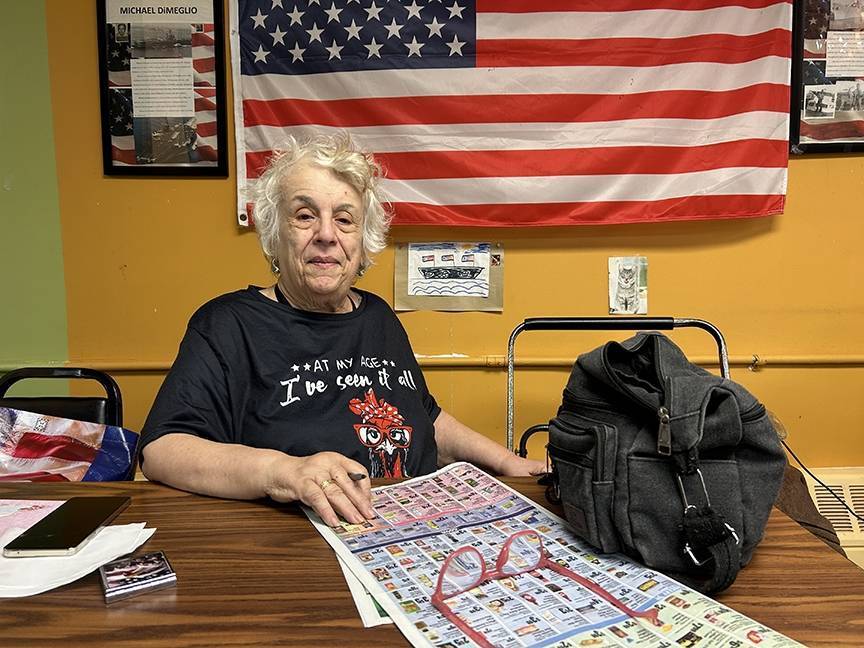

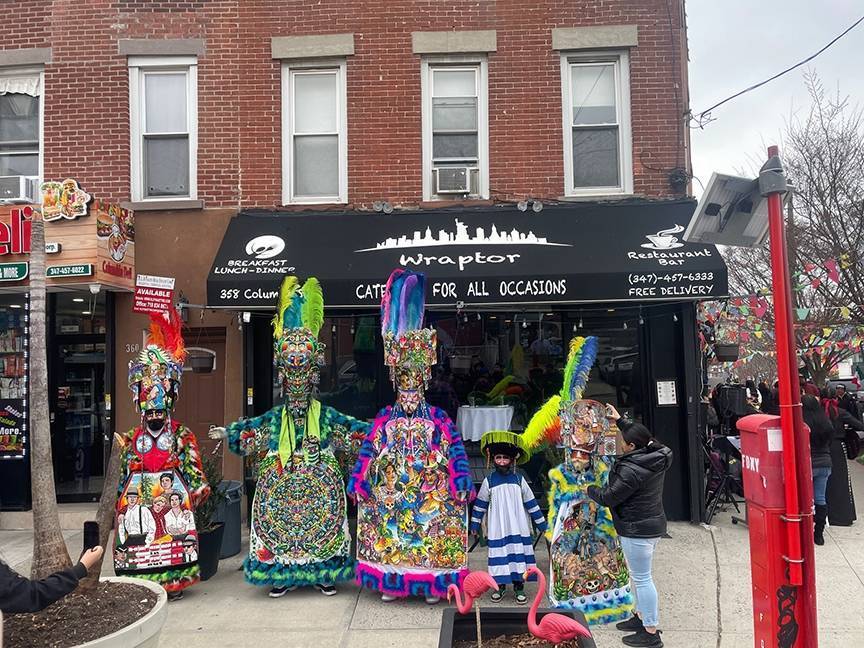
One Comment
I come several times per year from Staten Island , to the BBG. It’s a real treasure for my family’s visit, deep in the heart of Brooklyn.